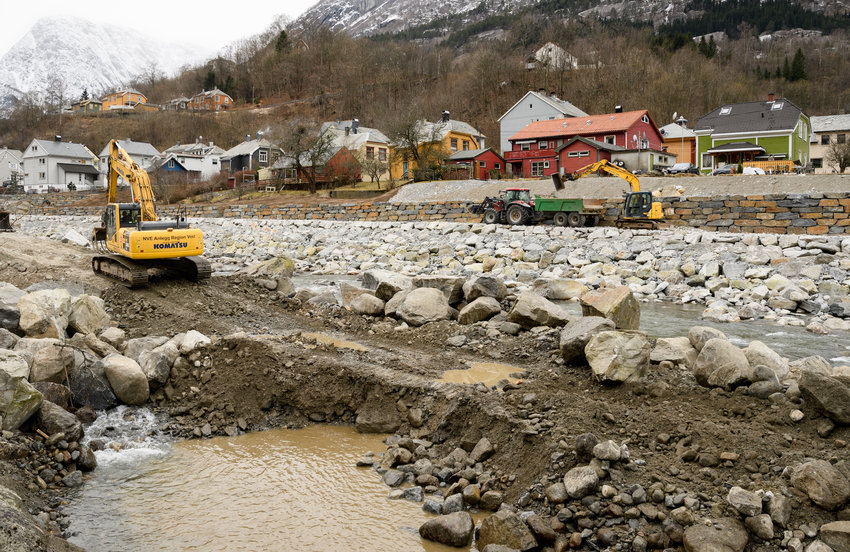Climate Futures launched the seasonal forecast for spring on Wednesday 16 February. Erik Kolstad, the director of Climate Futures and climate scientist at NORCE, presented the seasonal forecast for early spring, mainly focusing on March. The forecast indicates a mild early spring, with clear signals for a wetter and warmer season than normal.
After a plenary presentation of the forecast for spring, the participants were divided into digital groups (breakout rooms) for further discussion. After the launch, we sent out a survey to the participants. We wanted to get more insight into how the seasonal forecast is understood by participants who work in different sectors and have different backgrounds. We also wanted to get information on if and how the seasonal forecast is used in decision-making.
The survey consisted of both open-ended and closed-ended questions. The participants were asked to rate how well they understood the forecast and to what degree they used it in their decision-making. Additionally, they got the opportunity to write in their own words how they understood the forecast, and what they thought the weather would look like in the coming months. Finally, they were able to give feedback on the launch itself and the presentation of the forecast. There were a total of 85 participants at the launch, of which 13 answered the survey.
Summary of the answers from the survey
When asked if they used the monthly-/seasonal forecast in their planning, decision-making, or dissemination, about half answered that they never do. On the opposite end of the scale, 4 people answered that they always do.
However, the trust in the forecast is relatively high. On a scale of 1-6, over half answer that they trust the forecast to be reliable enough to use. Nevertheless, most of the participants consider it more likely that they will use the forecasts in 5 years than in the coming year. This can indicate that they trust that the forecasts will improve further in the coming years, or that these types of forecasts will become increasingly relevant in the future.
The majority of the participants who answered think the content of the monthly-/seasonal forecast is very easy to understand. Generally, it seems that the consequences of the forecasted weather are a bit harder to understand than the content, which can help explain why the forecasts are not used as much, despite the trust being fairly high.
We also asked to which degree the participants thought the forecast would affect their upcoming tasks. The majority thinks, for a number of reasons, that they will not be affected significantly. Either because the weather this spring is expected to be more or less as usual, or because their tasks are not affected by the weather. Still, some of the participants point out specific developments that can cause challenges or affect their tasks, like the timing of snow melting and its effect on the water levels in the reservoirs and flood risk, or the temperature in early spring and its effect on fruit blooming and frost risk.
Although most of the respondents do not think their tasks will be significantly affected by the forecast, the information can be one piece of the puzzle that is available in their mind along with several other pieces of information when they are making decisions during the spring. This can develop in several ways; it can be easier to make decisions if new (weather-)information shows the same development and confirms the forecast. In the opposite case, if the new information goes in the opposite direction, it can be harder to make a decision if you are uncertain about the development.
What will the weather look like?
In the respondents’ own descriptions of the weather in the coming weeks and months, they seem to agree that it will be milder and wetter than normal. This especially seems to be true for the temperature forecast, while the precipitation forecast is slightly less certain, or limited to certain parts of the country (West and Northern Norway).
Erik Kolstad, who presented the forecast, says that this corresponds well with what he wanted to present. The weather varies, and there will probably as always be cold and try periods during the spring, but on average the forecasts show an increased probability of warmer and wetter than normal, with the strongest signal for temperature. The forecasts also indicated drier than normal weather in Eastern Norway. The forecast will be updated during the spring.
Kolstad stresses that feedback on the forecasts is extremely important. Without these, it is difficult to improve the way the forecasts are presented, so he encourages even more of the participants to set aside a few minutes to give feedback after future presentations.
This survey is the first in a series of surveys. We plan similar surveys after every launch, both this year and in coming years, to be able to see changes and development in trust, understanding and use of the forecasts.

